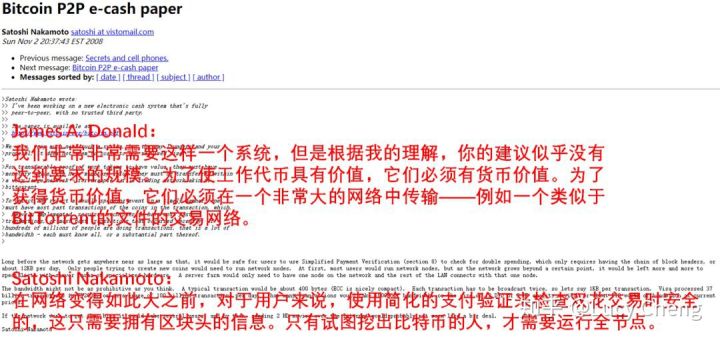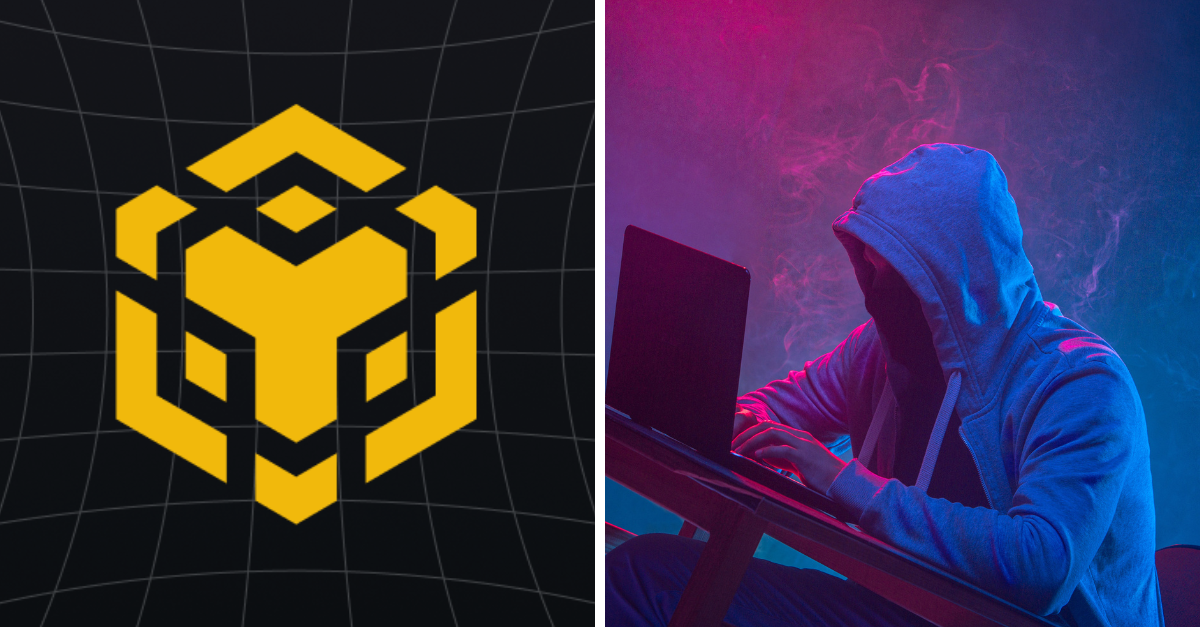Bitcoin's Secret History: How does Satoshi Nakamoto view the controversial expansion?
Source: Hash Pie
Author: LucyCheng
Bitcoin expansion has been the focus of controversy for many years, but few people know that this issue was raised as early as November 2008, just less than two days after the release of the Bitcoin white paper.

- Important Ethereum Capacity Expansion Solution: Optimistic Rollup Status Report (Part 1)
- Is the halving market over? "Wolf Coming" staged again
- The currency circle is a casino. Is technical analysis useful?
Screenshot from: metzdowd; Time: November 2, 2008
At the time, after Satoshi Nakamoto first appeared in the cryptography mail group and proposed the concept of Bitcoin, James A. Donald took the lead in replying. The Canadian libertarian pointed out that we need such a system, but it does not seem to be able to expand according to demand. If millions of people trade at the same time, it will consume a lot of broadband.
In this regard, Satoshi Nakamoto explained that before the network is overloaded, users only need to use simple payment verification (SPV) to check the double spend to ensure transaction security. At the same time, he believes that the broadband problem is not so serious, "assuming that The size is 1KB. In fiscal 2008, Visa processed a total of 37 billion transactions, an average of 100 million per day. Such a large transaction volume should consume 100G of broadband, it can also be said to be the size of 12 DVDs or two HD movies .It may take several years for the scale of the network to really expand to this extent. At that time, publishing HD movies on the network will be nothing. "
Many people use the above paragraph to explain that Satoshi Nakamoto had plans for capacity expansion on the chain and believes that he is confident that Bitcoin can reach the level of Visa after the expansion. However, what is mentioned here is more about block capacity, rather than the focus that everyone is currently paying attention to, the 1MB block size limit. That's because the maximum block size of the bitcoin system at the time was 32MB by default; let alone the early days when the transaction volume was very small, this size was more than enough even at today's transaction level.

Screenshot from: Bitcointalk; January 19, 2018
As for why the limit was set later and why the upper limit was 1MB, everyone is not sure. When Satoshi Nakamoto added the rule in 2010, he didn't even mention it to anyone, but silently achieved the 1MB limit in the two Bitcoin upgrades. Some people speculate that this is a temporary anti-spam measure; others say that setting the upper limit to 1MB has something to do with the size of the block mined at that time, which is far less than 1MB. It is impossible to know whether these conjectures are correct, but Satoshi Nakamoto does seem to have the idea of on-chain expansion, provided that it is done slowly.

Screenshot from: Bitcointalk; Time: October 3, 2010
On October 3, 2010, Bitcoin core developer Jeff Garzik posted a patch on the Bitcoin Forum that increases the size of Bitcoin blocks and suggested that the block size be expanded. However, Satoshi Nakamoto rejected Jeff on the grounds of incompatibility with the Internet, and said that if we are closer to this need, we can slowly change at a later stage. And this release, let the expansion problem be sealed until 2013 was raised again.
From the perspective of Satoshi Nakamoto's attitude towards the WikiLeaks incident, it is normal for him to have such an idea; perhaps, in the view of Satoshi Nakamoto, the Bitcoin at that time needed to grow gradually, and the restrictions prevented the brutal development from affecting the project Coming negative effects.
We will continue to update Blocking; if you have any questions or suggestions, please contact us!
Was this article helpful?
93 out of 132 found this helpful
Related articles
- Faced with the crisis in developed countries, Bitcoin's risk aversion ability breaks down
- In order to comply with the new central bank regulations, Fabric-based blockchain financial projects face large-scale transformation
- FCoin latest progress: Zhang Jian announces wallet address, defenders confront Zhang Jian's family, Hangzhou police will not file a case
- Babbitt First | Legal Regulations on Client Asset Protection of Crypto Asset Exchanges: From the Perspective of Related Rules in Canada and Hong Kong
- Take stock of the four "DeFi" projects on Ethereum
- Will quantum computers become the terminators of Bitcoin?
- Cementing Manifesto: Avoid Decentralization Maximization, Cementing Centralization Technology




